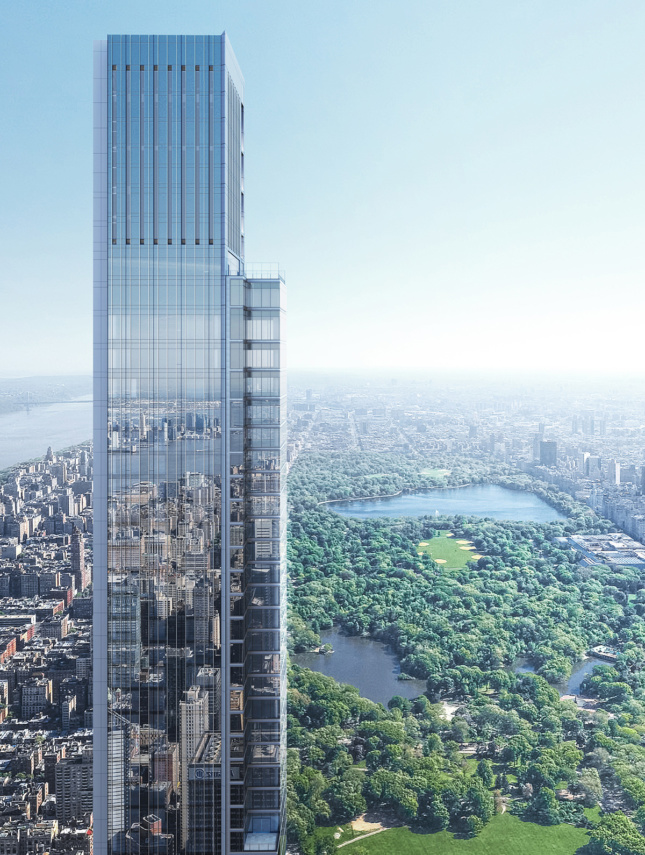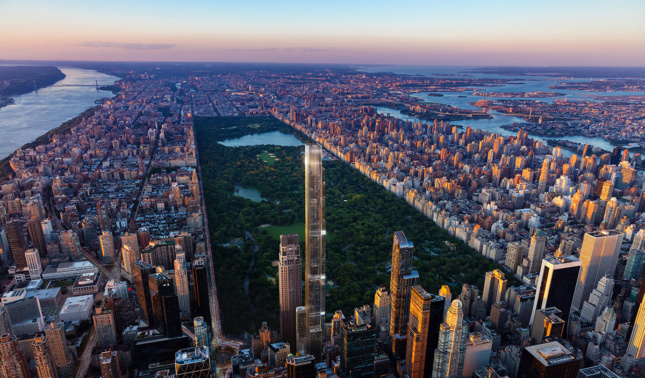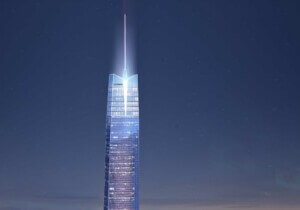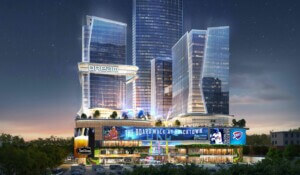The 1,550-foot-tall Central Park Tower is officially the tallest residential building in the world. After topping out earlier this week, the Adrian Smith + Gordon Gill Architecture-designed structure now stands nearly complete at 217 West 57th Street, higher than any of its neighbors on Manhattan’s Billionaire’s Row.
It’s the second project on that strip of premiere Midtown Manhattan real estate from Extell Development Company, the minds behind Christian de Portzamparc’s One57. The latter project became the first supertall condominium on the street in 2016. Since the original unveiling of that design in 2005, over eight similar projects have popped up and are now either finished or under construction along or near West 57th Street. As the latest to top out, Central Park Tower has broken the height record set by Rafael Viñoly’s 432 Park Avenue, with 131 floors.

Though largely residential and boasting 179 luxury condos, Central Park Tower—with its glass-clad facade and stainless-steel, pinstripe-like fins—will feature a seven-story Nordstrom flagship store at its base and three floors of amenities for apartment owners. Spanning a total of 50,000 square feet, these areas include an outdoor terrace with a pool, a wellness center with an indoor pool, and a ballroom and cigar bar on the 100th floor (without a pool, sorry).
At 300 feet above the street, the tower cantilevers slightly to the east and then nearly all the way up to the top floor, allowing views of Central Park from the north-facing apartments. Looking up from the park below, the building has the appearance of a series of extremely thin, elongated towers stacked closely to one another. That design move was intentional to maximize those (multi)million-dollar views. Together, the sections created a textured look that gleams during the daylight in different ways.
Despite its fancy features, the supertall project might suffer a similar sales fate like the other towers on Billionaire’s Row. It’s been widely reported that 40 percent of the seven buildings in the area are unsold simply because they are too expensive and the Midtown market isn’t as favored as some Lower Manhattan or even Brooklyn developments.
There’s one sign, though, that this could be changing: 220 Central Park South by Robert A.M. Stern recently passed $1 billion in sales according to 6sqft, largely thanks to the close on its $238 million penthouse by hedge fund billionaire Ken Griffin. Until Central park Tower hits its expected sellout of over $4 billion, 220 Central Park South will remain the most expensive residential building in the United States.

In an interview with Justin Davidson published this week in New York Magazine, Gordon Gill said that, apart from being another competitive project on Billionaire’s Row, Stern’s building posed another challenge for the architects from the beginning. It sits directly in front of Central Park Tower and boasts closer views of the sprawling landscape below.
“It’s like being at the theater; if everyone’s in rows trying to see the stage, nobody can see anything at all,” said Gill. “The solution is to stagger the seats. When we moved the tower off-center to get better retail spaces, we discovered an opportunity to capture incredible direct and oblique views.
That’s why the building is stepped and staggered in every direction — north, south, east, and west — walking all the way up to 1,550 feet. If you look at this building from a distance, it has a strong ethos and a sense of stability. On the other hand, there’s a lot of movement. The trick was managing all that activity without getting overly effusive.”











